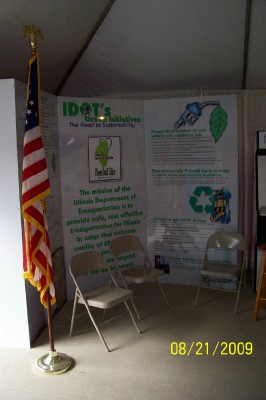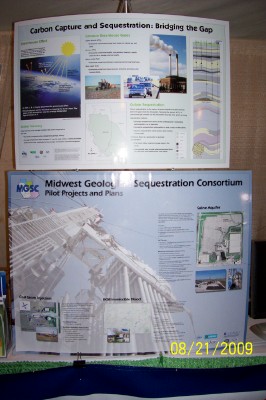America is the home of instant gratification. There IS nothing more instant than the automobile and capitalism and nothing more American than the car. At no time in the history of humans have people been able to go some place distant at a whim. The Odyssey remains a famous work precisely because it takes Odysseus 10 years to get home and he never got out of the eastern Mediterranean. For a historical perspective it took mankind 50,000 years to get around the world. Yet I can just get in my car and for a few hundred dollars drive to California. How dumb is that…better yet how irresponsible? For that priviledge 32,000 people (roughly) a year die. That figure has not changed since 1962.
That is again roughly 1,536,000 people. That is more casualities then most major wars. Driving put the casual in casualities. Staggering numbers when compared to Vietnam, or Korea and especially compared to the various incursions in the Arab or Persian Gulf (Iraq, Kuwait, and I include Afghanistan). So let me be clear, I hate the internal combustion engine and not just the one under your hood. But cars do not make any sense no matter what powers its drive train, whether its bio-diesel, electricity or water. It is a bad use of resources. If you need to cover long distances…take the damn bus. If you have to get to the store RIGHT NOW…take your bike. You want to go really really long distances…take the freakin train… But every last one of us having a 2000 lb. car (many weigh much more) that carries 50 lbs. of fuel (usually much more) and transports one 300 lb. human (usually much less) is just stupid. There really is no other way to characterize it dumb dumb dumb.
Please also do not misunderstand me. As long as people have traveled they have died in transit. Think the Titanic here, sometimes in spectacular numbers:
http://www.titanic-facts.com/
:}
But:
A traffic collision is when a road vehicle collides with another vehicle, pedestrian, animal, or geographical or architectural obstacle. Traffic collisions can result in injury, property damage, and death.
Terminology
Phrases commonly used to describe collisions include: auto accident, car accident, car crash, car smash, car wreck, motor vehicle accident (MVA), motor vehicle collision (MVC), personal injury collision (PIC), road accident, road traffic accident (RTA), road traffic collision (RTC), road traffic incident (RTI), smash-up and fender bender.
As the factors involved in collisions have become better understood, some organizations have begun to avoid the term “accident,” as the word suggests an unpreventable, unpredictable event and disregards the opportunity for the driver(s) involved to avoid the crash. Although auto collisions are rare in terms of the number of vehicles on the road and the distance they travel, addressing the contributing factors can reduce their likelihood. For example, proper signage can decrease driver error and thereby reduce crash frequency by a third or more.[1] That is why these organizations prefer the term “collision” rather than “accident”.
However, treating collisions as anything other than “accidents” has been criticized for holding back safety improvements, because a culture of blame may discourage the involved parties from fully disclosing the facts, and thus frustrate attempts to address the real root causes.[2]
Background
Road crashes causing death, injury, and damage have always happened since animals were domesticated. History tells people who were the victim of such incidents. Louis IV of France died in 954 after falling from his horse, as did at least two kings of England: William I (William the Conqueror) in 1087 and William III in 1702. Handel was seriously injured in a carriage crash in 1752.[3]
The British road engineer J. J. Leeming, compared the statistics for fatality rates in Great Britain, for transport-related incidents both before and after the introduction of the motor vehicle, for journeys, including those by water, which would now be undertaken by motor vehicle:[4] For the period 1863–1870 there were: 470 fatalities per million of population (76 on railways, 143 on roads, 251 on water); for the period 1891–1900 the corresponding figures were: 348 (63, 107, 178); for the period 1931–1938: 403 (22, 311, 70) and for the year 1963: 325 (10, 278, 37).[4] Leeming concluded that the data showed that “travel accidents may even have been more frequent a century ago than they are now, at least for men“.[4]
Irish scientist Mary Ward died on 31 August 1869 when she fell out of her cousins’ steam car and was run over. She is believed to have been the world’s first motor vehicle accident victim.


A truck crash.
In the United States the calculable costs of motor-vehicle crashes are wage and productivity losses, medical expenses, motor vehicle damage, employers’ uninsured costs, and administrative expenses. (See the definitions for a description of what is included in each component.) The costs of all these items for each death (not each fatal crash), injury (not each injury crash), and property damage crash was: Average Economic Cost per Death, Injury, or Crash, 2006: Nonfatal; Disabling Injury; $55,000; Property Damage Crash (including nondisabling injuries) $8,200; Death; $1,210,000; Expressed on a per death basis, the cost of all motor vehicle crashes—i.e. fatal, nonfatal injury, and property damage—was $5,800,000. This includes the cost of one death, 197 property damage crashes (including minor injuries, 54 nonfatal disabling injuries). This average may be used to estimate the motor vehicle crash costs for a state provided that there are at least 10 deaths and only one or two occurred in each fatal crash. If fewer than 10 deaths, estimate the costs of deaths, nonfatal disabling injuries, and property damage crashes separately.
Defined in sections 2.3.4 through 2.3.6 of the Manual on Classification of Motor Vehicle Traffic Accidents (7th Edition) ANSI Standard D16.1-2007 are defined by severity motor vehicle injuries Estimates are given here of the costs by severity of injuries. http://www2.nsc.org/lrs/statinfo/estcost.htm
Road incidents result in the deaths of an estimated 1.2 million people worldwide each year, and injure about forty times this number (WHO, 2004).
:}
OR:
http://en.wikipedia.org/wiki/Divorce_your_Car!
Divorce your Car! Ending the Love Affair with the Automobile (New Society Publishers, ISBN 0-86571-408-8), written by Katie Alvord and with a foreword by Stephanie Mills, proposes that automobiles have lost their value as a convenience and have become a hindrance, even an addiction. “Today’s relationship with the automobile inflicts upon us pollution, noise, congestion, sprawl, big expenses, injury, and even death. Yet we continue to live with cars at a growing cost to ourselves and the environment.” [1] There are several arguments for her thesis presented throughout the text as well as some suggestions for how to wean one’s self from automobiles.[2]
Reception
The book was well received by critics and has been hailed by environmentalists as a realistic description of the current situation in which we live. Alvord cites many sources throughout the text to back up her claims, however there have been complaints that some of them are biased, originating from sources with an apparent agenda, such as Asphalt Nation. Jay Walljasper of Utne Reader claims the book is “A clear-headed approach to reducing or even eliminating our dependence on cars, Divorce Your Car! [is] full of common sense and fresh insight.”
About the Author
Katie Alvord, born in northern California, is a freelance writer, environmentalist, and avid bicyclist. A graduate of the University of California at Davis and with a Master’s degree from the University of California at Berkeley, Alvord has worked with many non-profit agencies focused on environmental issues. She has had articles printed in such publications as E Magazine, Wild Earth, and The Urban Ecologist. In 1992 she received several awards, including the Clean Air Champion award, for her self documented experience of divorcing her car while living in a rural part of Sonoma County, California.[4]
[edit] Main Points
[edit] Supporting Arguments
In the book, Alvord states that air pollution from cars is damaging to the health of humans directly because of contaminants in pollution and indirectly through the destruction of the environment and contribution to global warming.[5] Oil spills, acid rain, and dirty rivers are some of the results of widespread use of cars, according to Alvord. The destruction from oil spills can wreak havoc on entire ecosystems.[6] In addition to the cost of the car, an owner can expect to pay much more in repairs and upkeep throughout the car’s life.[7] Additionally, tens of thousands of people die every year from car crashes, and hundreds of thousands are injured.[8]
[edit] Solutions
Alvord proposes that there are benefits to walking, cycling and using mass transit beyond saving the Earth, such as exercise, money conservation, and self reliance.[9] By modifying land use, financial policies, and urban infrastructure, efficiency can be increased world wide and society can learn to function without a car in every household.[10] With the advent of the Internet and decreasing phone prices, it is more efficient to work from home or video conference online in many circumstances, and just as effective. This not only reduces pollution but can save money for businesses.[
:}


















 PNNL’s introduction of a metal-organic heat carrier, or MOHC, in the biphasic fluid may help improve thermodynamic efficiency of the heat recovery process. This image represents the molecular makeup of one of several MOHCs.
PNNL’s introduction of a metal-organic heat carrier, or MOHC, in the biphasic fluid may help improve thermodynamic efficiency of the heat recovery process. This image represents the molecular makeup of one of several MOHCs. ,
,